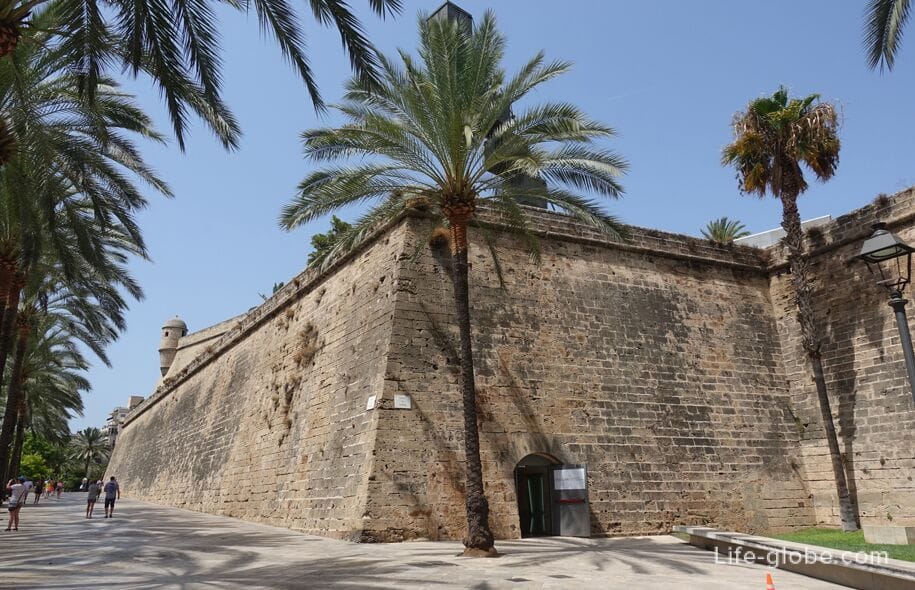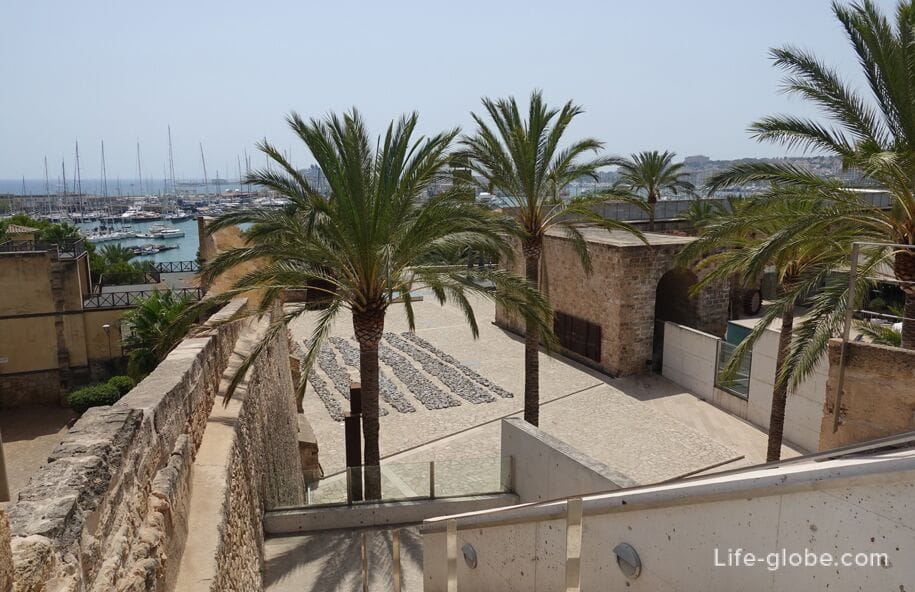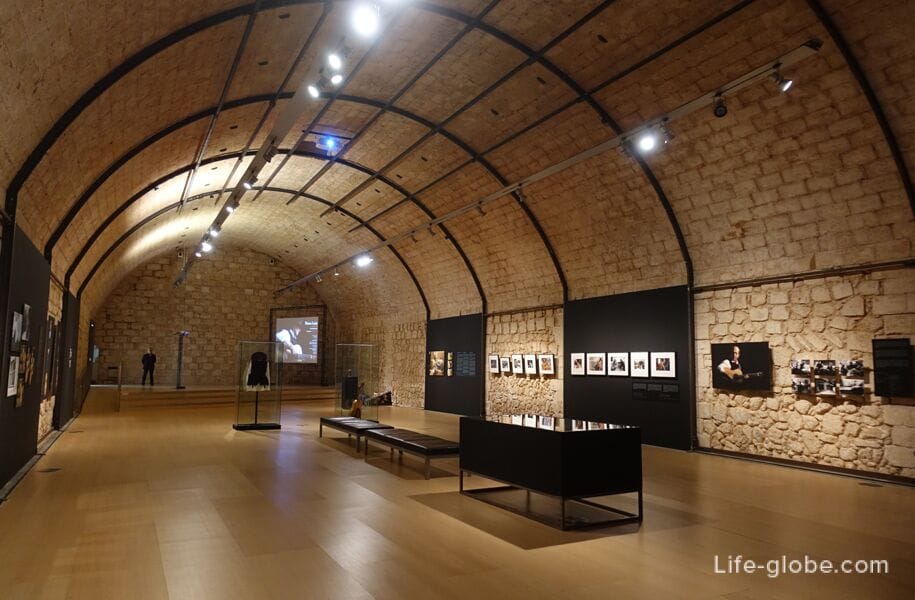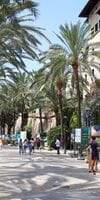Paseo Sagrera (Catalan title: Passeig Sagrera) is a street located in the capital of the Balearic Islands - Palma de Mallorca or simply Palma.
Street Chic runs along part of the seaside Boulevard of Paseo Maritimo, has a length of 500 meters and stretches from Avenida Antonio Maura (Av. d'antoni Maura) to the Creek Riera.
The street was built in 1910 on the occasion of the Regional exhibition of the Balearic Islands.
The history of the space, where now runs the street dates back to the beginning of 1873, when Estanislao Figueres, President of the First Spanish Republic (1873-1874) and the head of state at the time, sanctioned the demolition of part of the old defensive walls of Palma, which went to the sea. More than thirty years the freed space remained occupied and nothing was a field. In the night from 23 to 24 of June 1910, the Regional exhibition of Baleares, the architect Gaspard Bennasar decided to surprise palmizana and night, together with two hundred people, started construction of the boardwalk. At dawn already loomed features new streets were provided with benches and street lamps.
Thus was born the Paseo Sagrera. However, it should be noted that prior to the construction of a new boardwalk-occupied street space already was a route, although of far less importance for the city.
Today, most of the Passeig Sagrera is a great pedestrian area along the historic part of Palma on one side and the road (the property is Maritimo) on the other.
Along the street is planted with tall palm trees, places to relax, lanterns, sculptures and important sights. Sometimes hold public events such as fairs and markets.
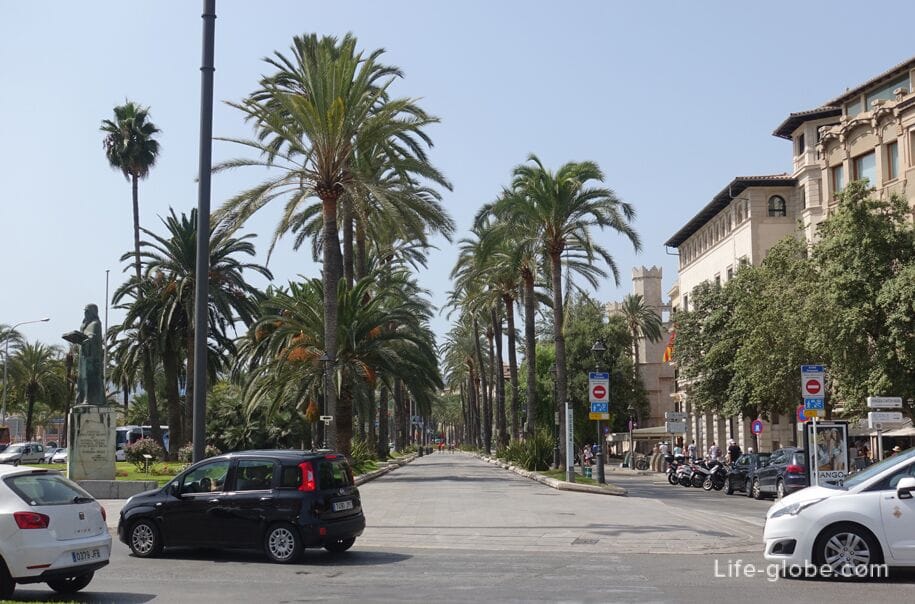

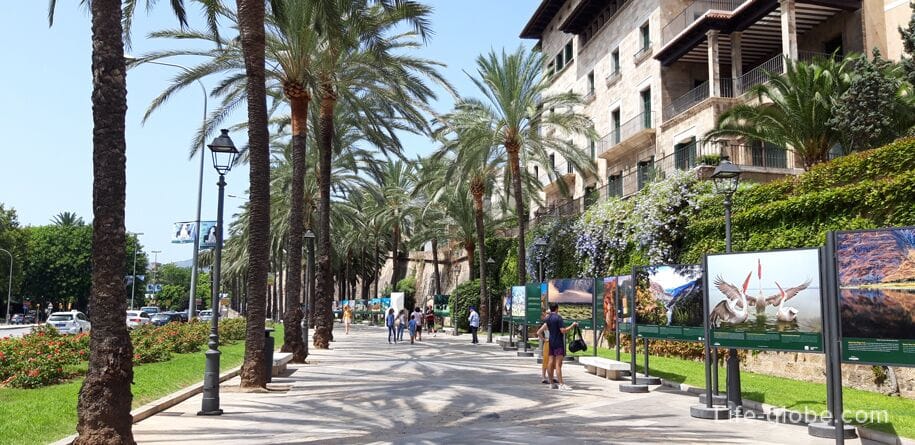
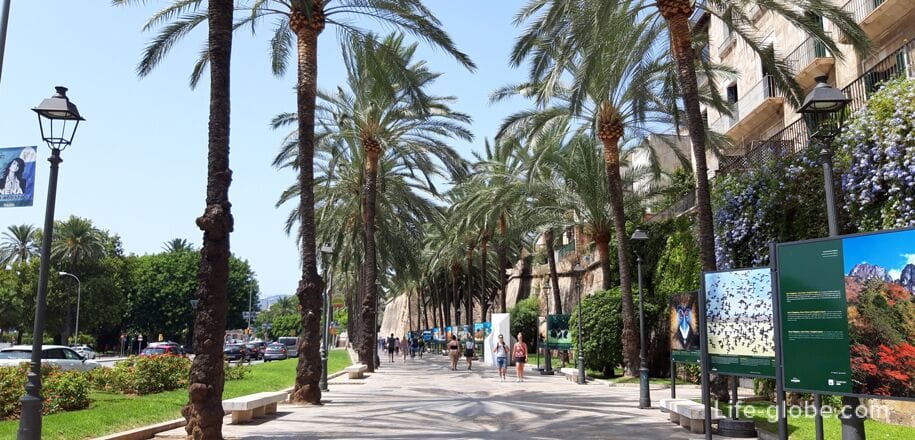

The sights of the Paseo Sagrera
A Monument To The Roman Lulu
A monument to the Roman Lulu (Monument a Ramon Llull) has a height of over three meters and is Ramona Lulla with a long beard, standing with a book in his left hand and a pen in the right.
The figure is mounted on a stone pedestal, on each of the four sides of which are inscriptions. On one side there is a shield of the city next to the following text: "the City of Majorca, Ramon Lully". The other three - a few fragments of the major works of the Novel Lulla presented in three languages, which he wrote, Catalan, Latin and Arabic.
The sculpture was created in 1967 by the sculptor Horacio de Egia.
The monument is located at the beginning of the Passeig Sagrera.
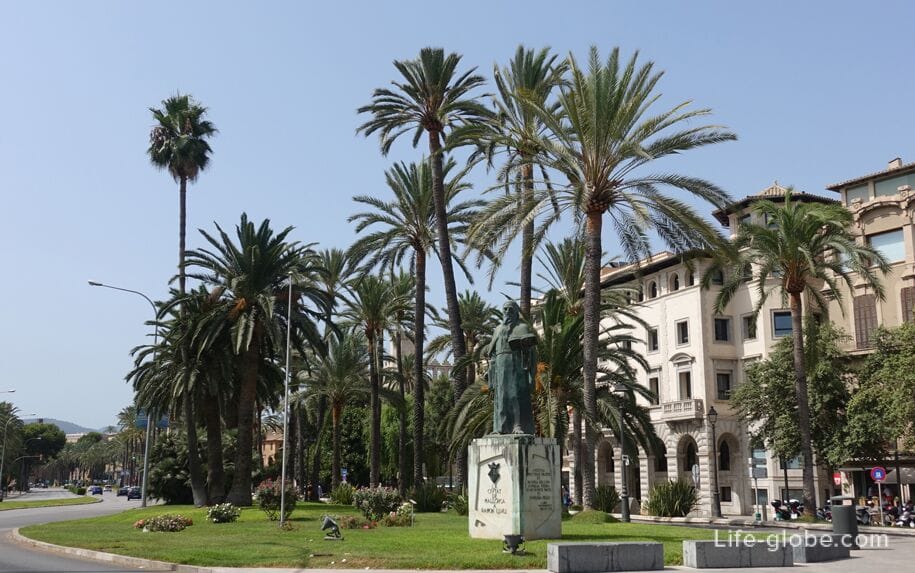
The Building Of La Lonja
La Lonja / La Lounge area or "Market Palma" (La Lonja de Palma de Mallorca or Sa Llotja) is one of the masterpieces of Gothic architecture in Mallorca.
The building was built between 1426 and 1448 years architect and sculptor Guillermo Sagrera (hence the name of the road) as the headquarters of the trade Association.
The floor plan is rectangular, with one main internal space is divided into twelve sections in original columns.
The exterior of the building decorated with towers with battlements and small sculptures, arched Windows and doors.
Outside Lounge area facing the South facade of the building, while its main façade opens onto the eponymous square is the Lonja or Lota (Placa de la Llotja).
Currently, the building opens its doors only during exhibitions and cultural events.
The address of La Lonja: Placa de la Llotja, 5.
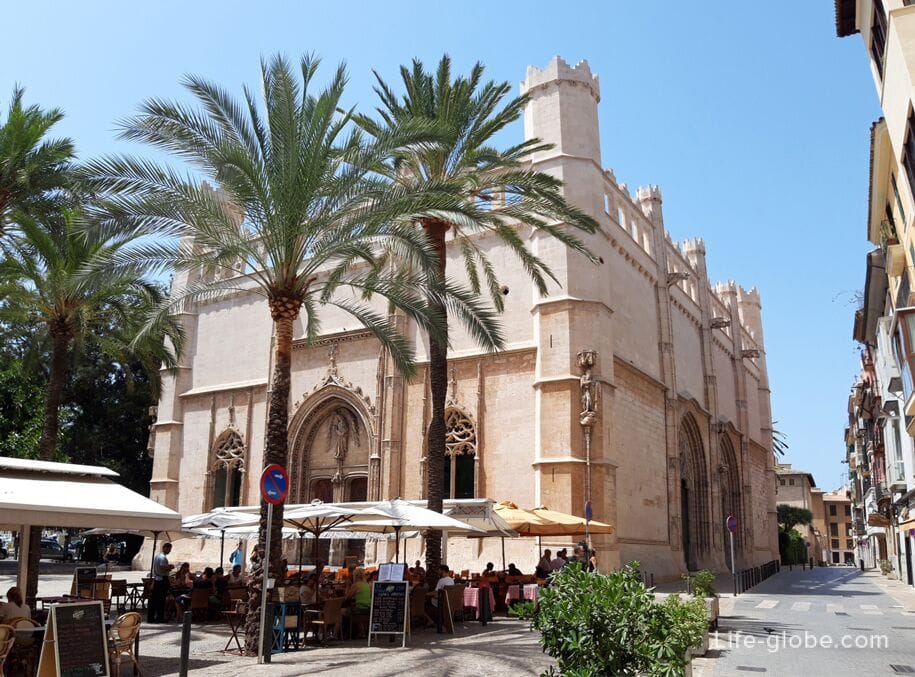
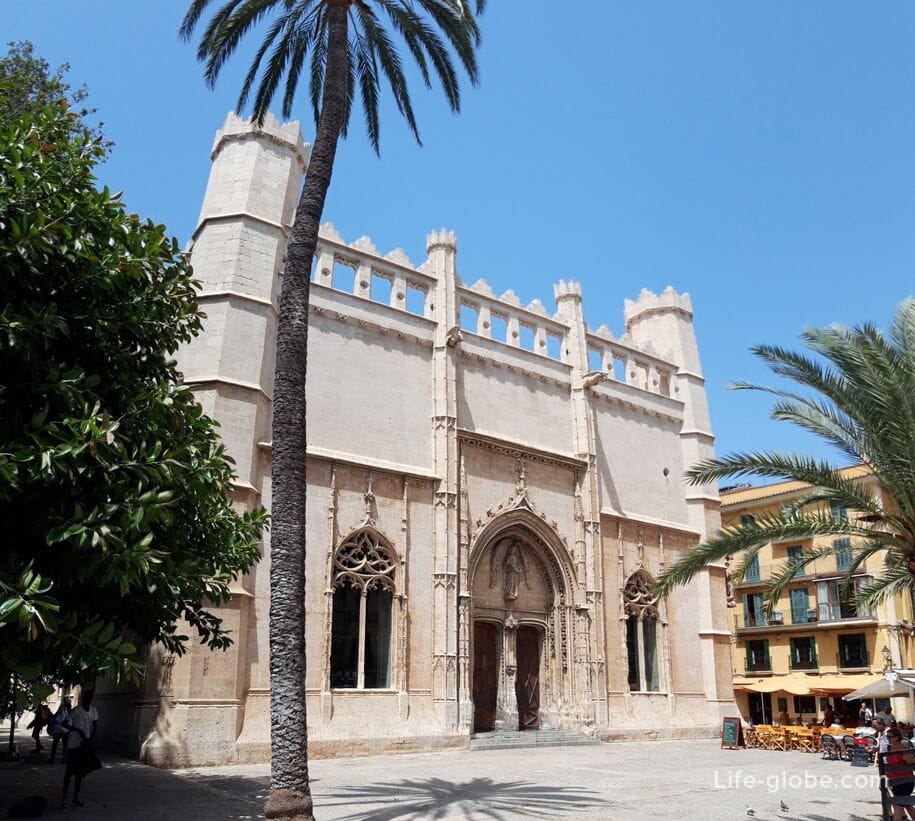
Photo square Wire
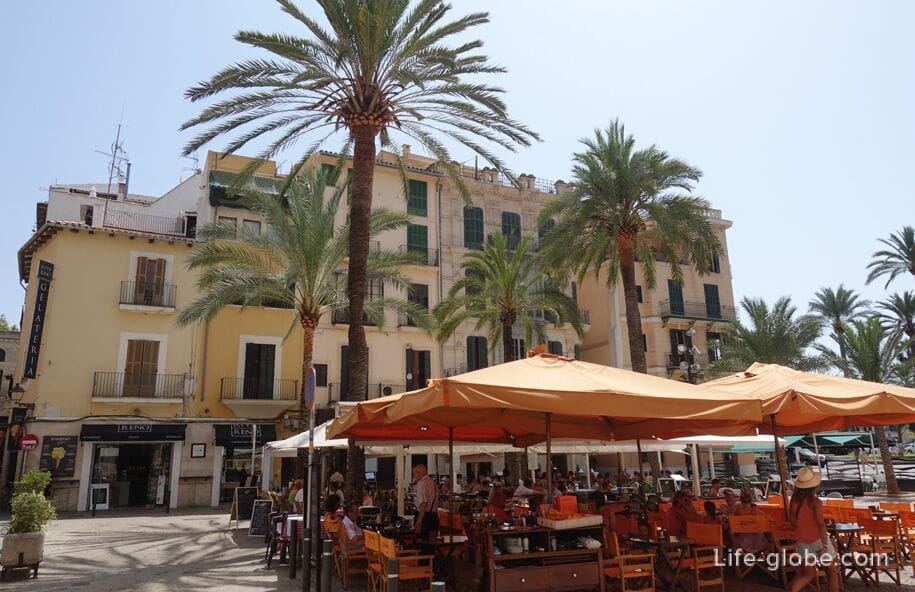
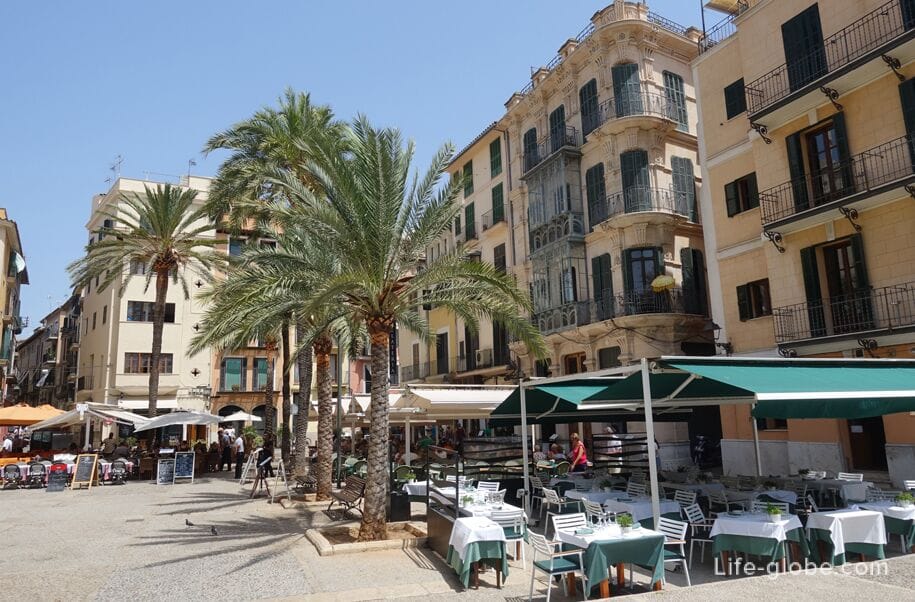
Old port gate
It was originally one of the gates of the old city walls of Palma.
The gate represented the entrance to the city, was located near the old pier (hence the name of the gate) and was the main access to the city from the sea.
When the walls were demolished (1902), and the space near the sea expanded, the gate was moved to its present location.
To date, the gates have been preserved only the entrance arch, two circular towers, formerly surrounding the arch is not preserved.
From an artistic point of view the gate is made in the Mannerist style and dated 1620.
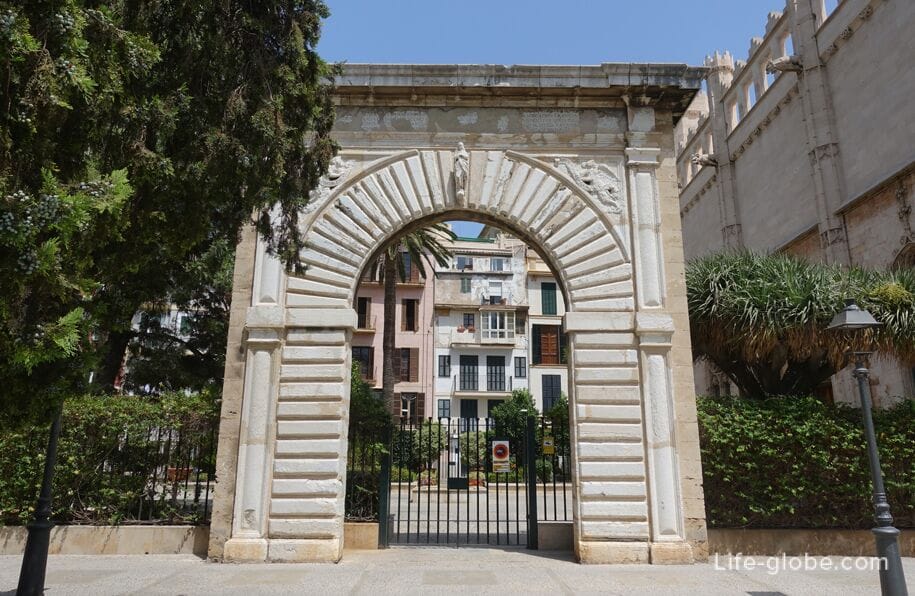
Consulate of the sea
Consulate of the sea (Consulado del Mar) is a building in the Mannerist style, built in 1669. Initially it was a place of the same name legally-commercial Institute. Since 1983 is the seat of government of the Balearic Islands.
Unique architecture of the building clearly underlines divided into three tiers (floors) of the facade. The exterior of the building is also notable clock tower, located on the East side of the building.
At the Consulate are works of art. There are also offices and workrooms, where a team of people working on the implementation of the draft General government.
Sometimes, during social events, the building opens its doors to the public.
Today the building La the Wire and the Consulate of the sea represent a monumental complex which forms the headquarters of the Presidency of the Balearic Islands.
Parallel to the Paseo Sagrera is the side facade of the Consulate of the sea, near which are places to relax and placed a cannon.
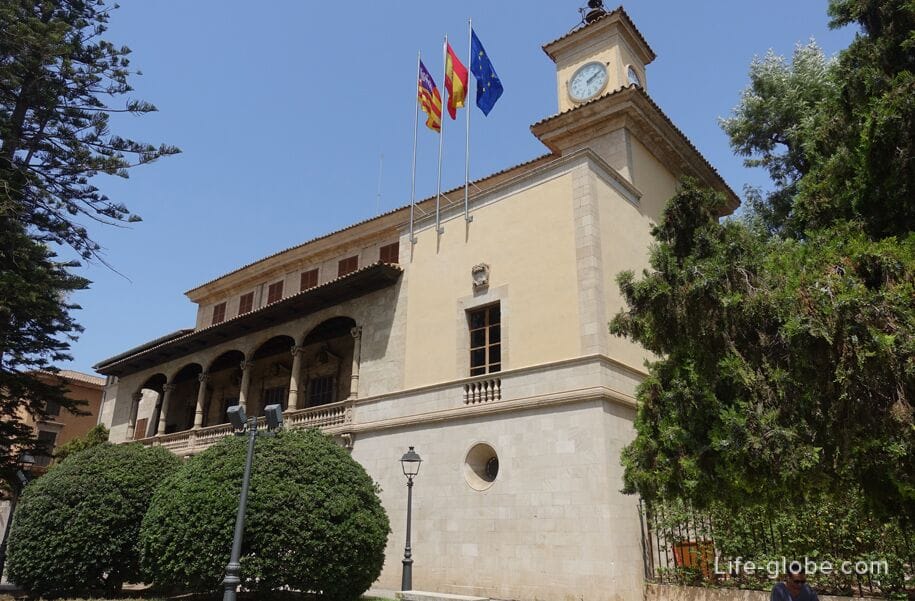
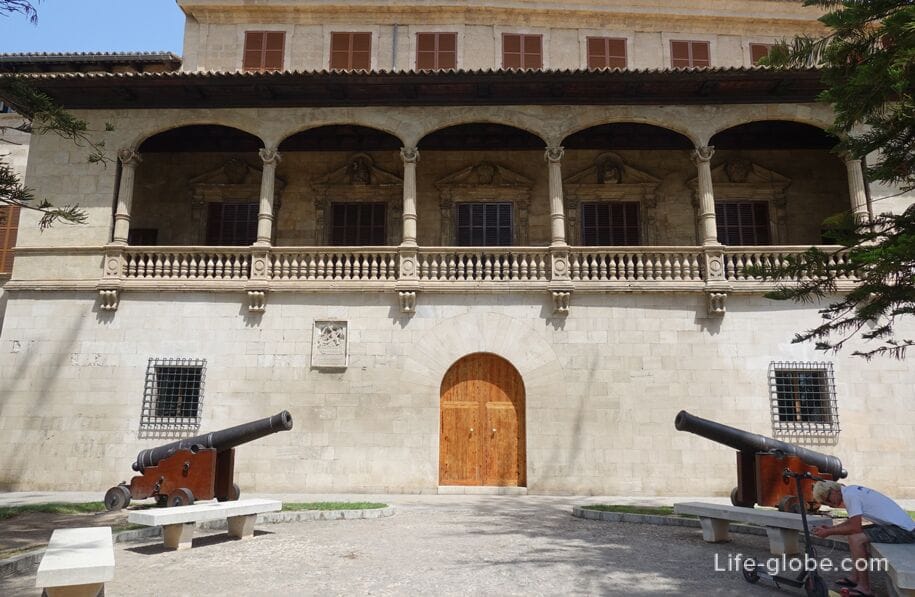
Another portal of the Consulate building facing the square Drassana (Placa de la Drassana), having almost a circular shape in the center of which is placed a fountain with a monument.
Address of the Consulate of the sea: Passeig de Sagrera, 7 / Carrer de la Llotja, 3.
Photo portal Lounge La
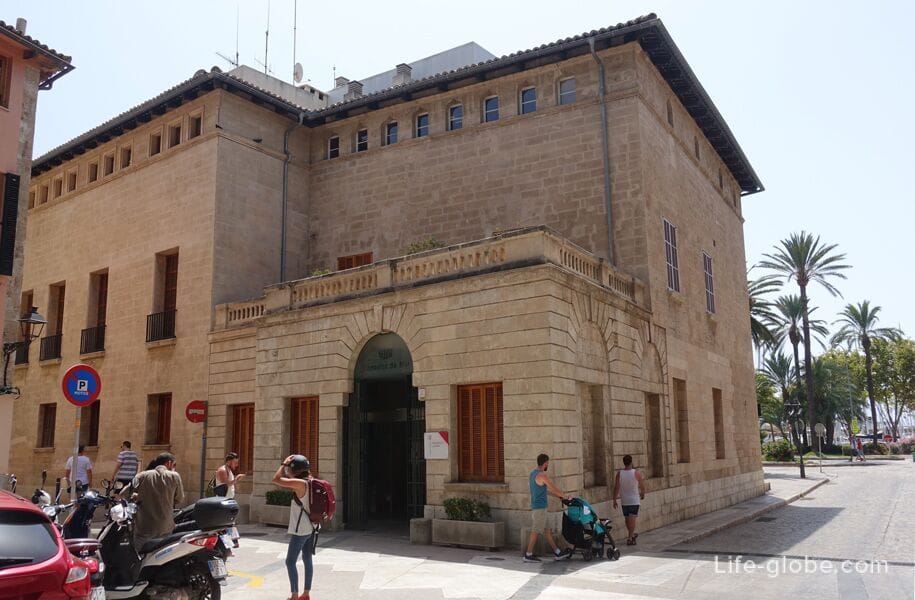
Photos of the area Drassana
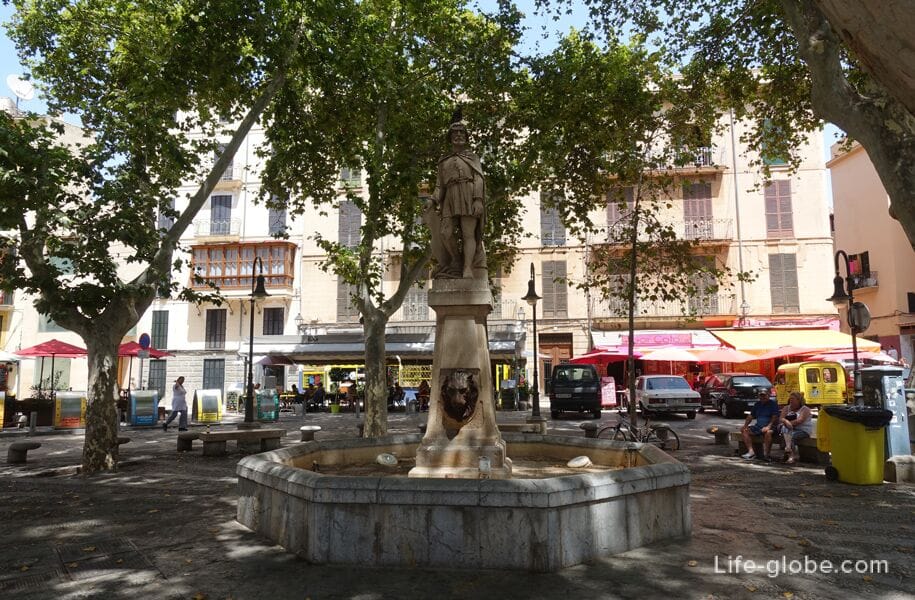
The sculpture "PALMA"
The sculpture "palm" is one of the most photographed in the city.
This is the work of sculptor llambias of Pepa, created in 1999 from cortenova steel, paint and varnish, has the dimensions 350х70х70 see and is described as a sculpture in the pop art style, which uses language as the basis for the transfer of ideas and bright color is attention-grabbing.
The sculpture was installed by the city Council on the occasion of the Universiade 1999.
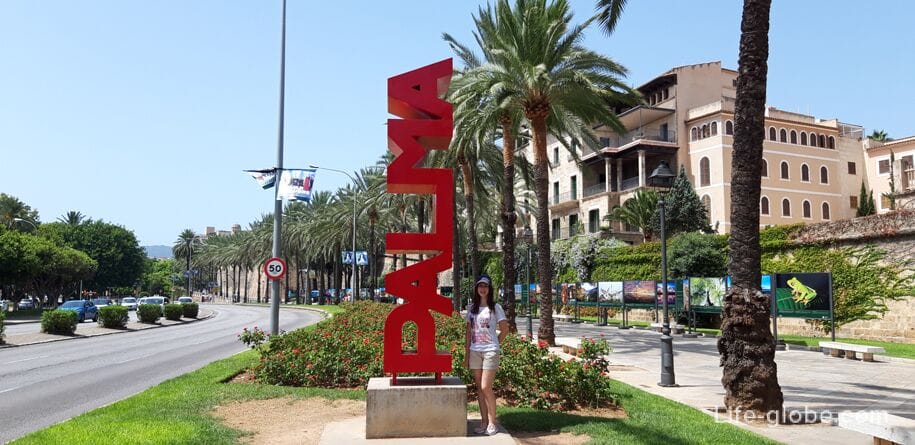
Monument To Ruben Dario
Marble statue of Ruben Dario (Ruben Dario) was created from the monolith sculptor of the Majorcan Antoni Oliver in 1951.
Monolith is a bust of the Nicaraguan poet Ruben Dario, who spent a season on the island (in the town of Valldemossa). In 1950, the Consul of Nicaragua had asked to erect a monument in honor of the memory of the poet's stay on the island.
At the bottom of the sculpture is a bronze inscription: "A Ruben Dario".
The monument was erected in front of the building of the Ministry of social services ( Conselleria de Serveis Socials i Cooperacio)
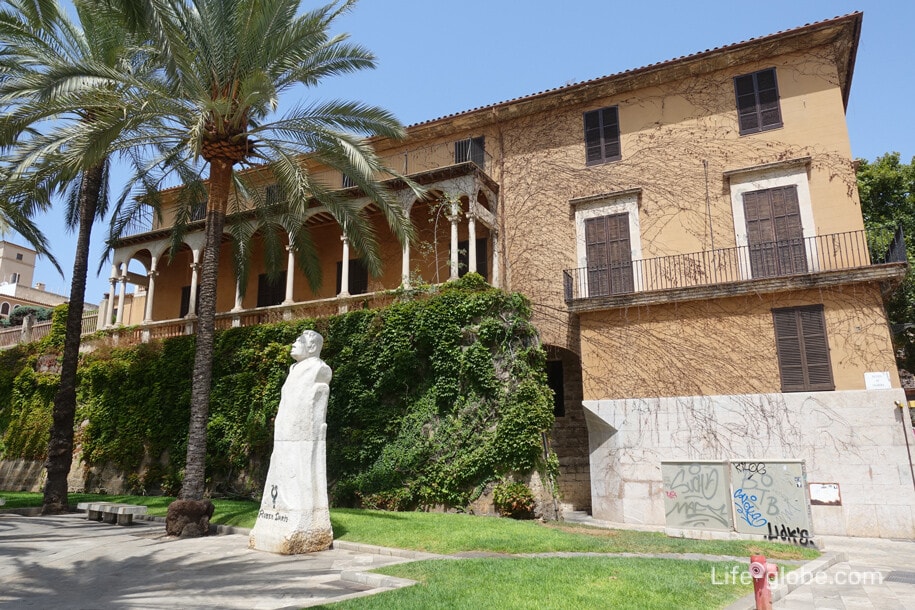
Further along Passeig Sagrera is a restored city wall, behind which you can see interesting architectural structure.
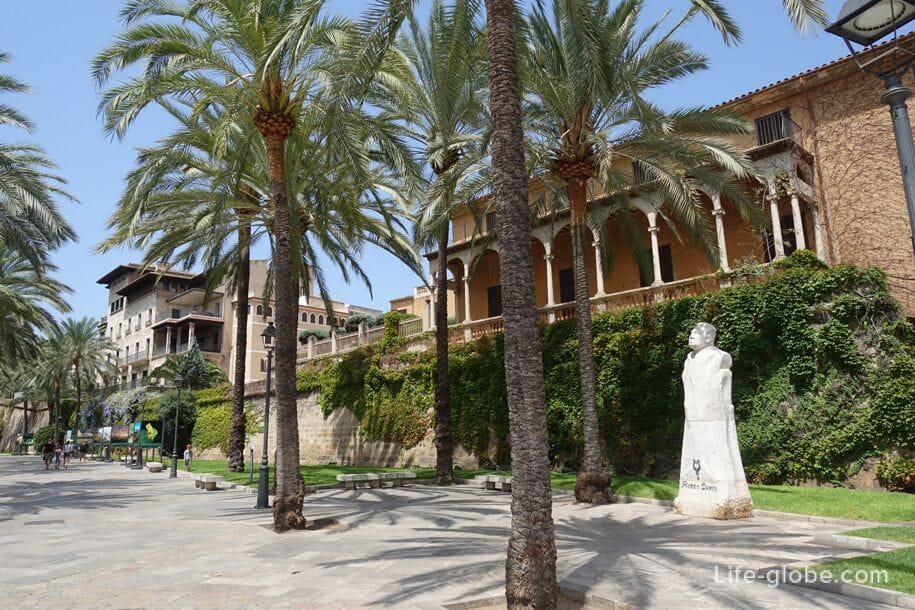
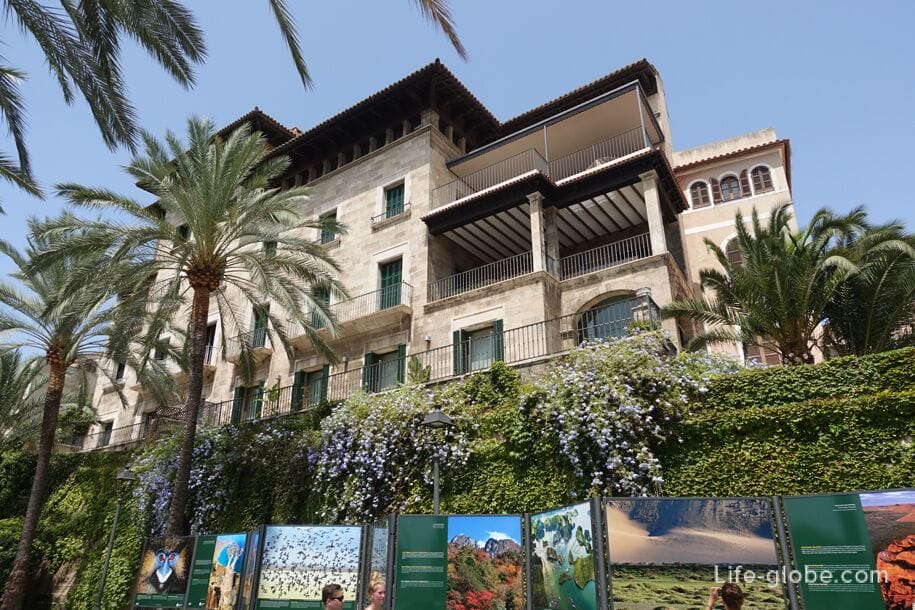
Es Baluard
The end of the Passeig Sagrera symbolized by the building of es Baluard, which was previously a Bastion.
Bastion of San Pedro or the Bastion of St. Peter is a Bastion, which in turn is part of the old Renaissance walls, and which now houses the Museum of contemporary art es Baluard (Es Baluard).
Also in the old Bastion offers a panoramic terrace and a restaurant. Read more about the Museum es Baluard...
